#Biff McGuire
Explore tagged Tumblr posts
Text

#movies#polls#serpico#serpico 1973#serpico movie#70s movies#sidney lumet#al pacino#john randolph#jack kehoe#biff mcguire#barbara eda young#requested#have you seen this movie poll
74 notes
·
View notes
Text
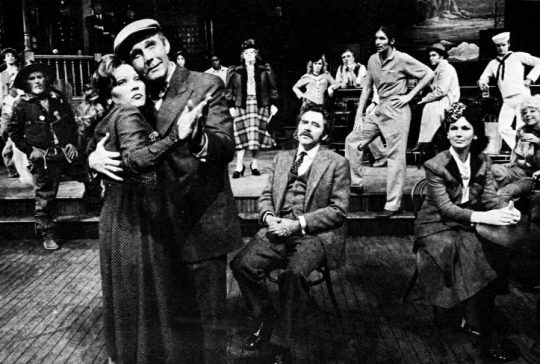
William Saroyan’s The Time of Your Life with (left to right) Susan Tyrrell, Biff McGuire, (sitting) #JamesBroderick, Priscilla Pointer, (background, on steps) Robert Symonds, and Leonard Frey.
Lincoln Center for the Performing Arts, 1969.
#susan tyrrell#william saroyan#The Time of Your Life#Biff McGuire#James Broderick#Priscilla Pointer#Robert Symonds#Leonard Frey#Lincoln Center for the Performing Arts#1969#stage#play
7 notes
·
View notes
Text
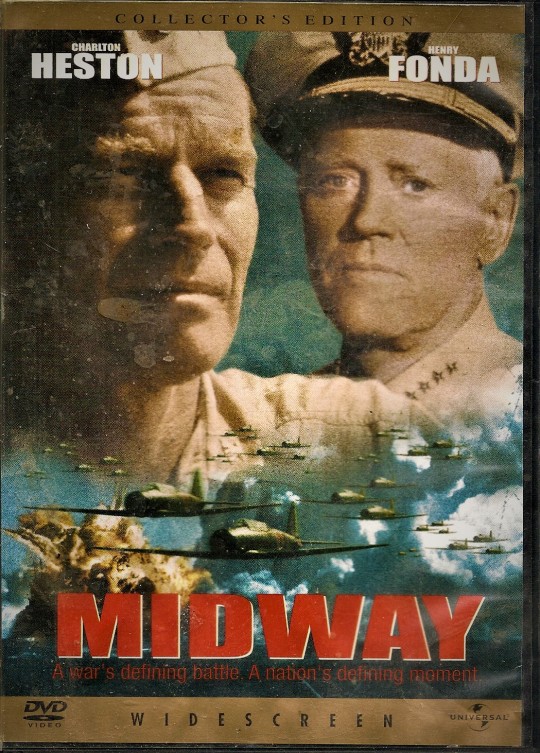
Bad movie I have Midway 1976
#Midway#Charlton Heston#Henry Fonda#James Coburn#Glenn Ford#Hal Holbrook#Toshirô Mifune#Robert Mitchum#Cliff Robertson#Robert Wagner#Ed Nelson#James Shigeta#Christina Kokubo#Monte Markham#Biff McGuire#Christopher George#Kevin Dobson#Glenn Corbett#Gregory Walcott#Edward Albert#Pat Morita#John Fujioka#Dale Ishimoto#Erik Estrada#Larry Pennell#Clyde Kusatsu#Phillip R. Allen#Tom Selleck#Sab Shimono#Conrad Yama
4 notes
·
View notes
Text
THE WEREWOLF OF WASHINGTON (1973) Reviews and free to watch online
‘Makes it perfectly clear’ The Werewolf of Washington is a 1973 American comedy horror film about a reporter who has had an affair with the daughter of the U.S. President and so is sent to Hungary. There he is bitten by a werewolf, and then gets transferred back to Washington, where he gets a job as press assistant. Then bodies start turning up in D.C…. Written, edited and directed by Milton…

View On WordPress
#1973#Biff McGuire#comedy horror#Dean Stockwell#free to watch on YouTube#free to watch online#Michael Dunn#movie film#political satire#review reviews#The Werewolf of Washington#werewolf
1 note
·
View note
Text
Movie Macabre 109 - The Werewolf of Washington (1973)

Movie Macabre Season 01 - Episode 09 (009) Original Air Date: 21 November 1981
Full episode available to watch for free on ShoutFactoryTV
It's also available on DVD, packaged with The Doomsday Machine (episode 232).
The Werewolf of Washington (1973) Written and directed by Milton Moses Ginsberg
Starring: Dean Stockwell Jane House Biff McGuire Henry Ferrentino Despo Diamantidou Clifton James Jack Waltzer
"After being unknowingly inflicted with the bite of a werewolf while on a visit to Europe, White House press secretary Jack Whittier begins to turn into a deadly beast by night, terrorizing Washington D.C. and presenting a very deadly threat to the President." (Letterboxd)
The ninth episode of Movie Macabre featured the absolutely baffling The Werewolf of Washington. This movie has some of the oddest filmmaking choices I've seen in a long time. Jack Whittier is a journalist returning to Washington D.C. after a long absence with a secret: he's a werewolf. In his wolf form, Whittier kills important people. In his human form, he nervously paces about, trying to get anyone to believe what he's going through. It's a fairly basic premise with potential. Unfortunately, the execution of the storytelling and filmmaking leave a lot to be desired.
The story moves along at a decent pace. The film gives the viewers enough to understand what's going on. But every now and again, things will inexplicably veer into scenes that feel superfluous. The story is a little shallow and somewhat lacking in any clear point of view.
The most baffling thing about the movie is the filmmaking. A substantial portion of the film feels like they only had one take. Awkward moments and dialogue flubs are left in the film. In a strange way, it almost feels more true to life. Take for instance this scene with a necklace:
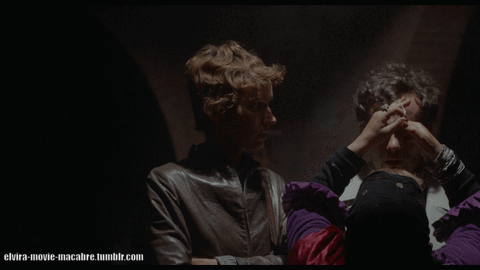
Why? Why not cut and re-film this? Why not put the necklace on a longer chain? Why not unlatch it and put it around his neck? It's so weird and awkward. This is only a small example of the baffling choices (one that Elvira herself comments on).
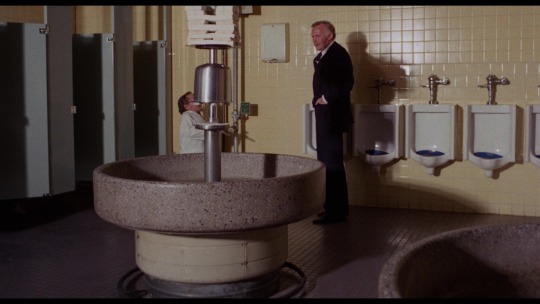
Guess which of these two people is speaking. I'll give you a hint: it's not the one in view. Strange choices abound. Despite these weird moments, there is some fun to be had. I love the moments when the wolf acts like an overgrown dog.


And who can ignore the bowling waddle.

Despite my complaints, I did find myself enjoying the movie. It's not so-bad-it's-good. But it's a perfectly fine movie to half pay attention to on a Saturday morning. It fits well with the other films featured on Movie Macabre to this point.
#elvira#elvira mistress of the dark#horror host#horror#horror film#elvira movie macabre#movie macabre#1970s#1970s horror#werewolf of washington#werewolf#dean stockwell
1 note
·
View note
Photo

#the heart is a lonely hunter#alan arkin#laurinda barrett#stacy keach#chuck mccann#biff mcguire#percy rodriguez#cicely tyson#sondra locke#robert ellis miller#1968
18 notes
·
View notes
Photo

Serpico
directed by Sidney Lumet, 1973
#Serpico#Frank Serpico#Sidney Lumet#movie mosaics#Al Pacino#Tony Roberts#Biff McGuire#Edward Grover#Ed Grover#Cornelia Sharpe#Barbara Eda-Young
20 notes
·
View notes
Photo
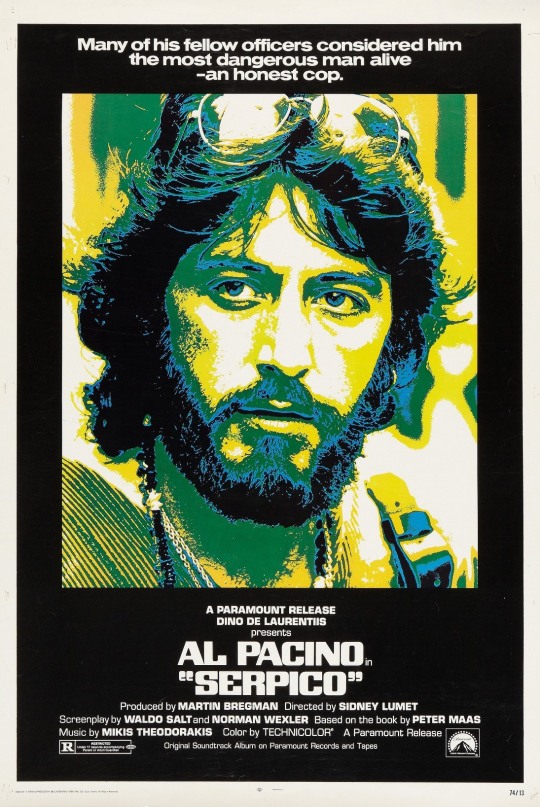


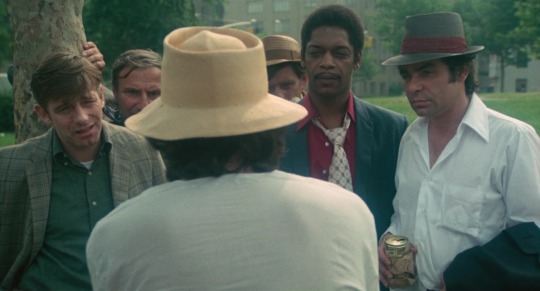



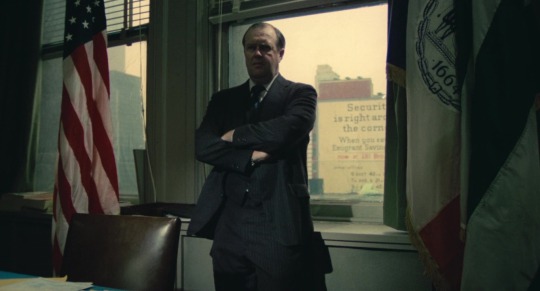


Serpico (1973, Sidney Lumet)
5/22/21
#Serpico#Sidney Lumet#Al Pacino#John Randolph#Jack Kehoe#Barbara Eda-Young#Biff McGuire#Cornelia Sharpe#Tony Roberts#M. Emmet Walsh#F. Murray Abraham#drama#true story#New Hollywood#crime#police#corruption#whistleblowers#stool pigeons#assassination#New York#bribery#undercover#neo-noir#Italian-American#conspiracy#police brutality#70s#oscar nominee
18 notes
·
View notes
Photo

Frank, let's face it. Who can trust a cop who don't take money?
Serpico, Sidney Lumet (1973)
#Sidney Lumet#Waldo Salt#Norman Wexler#Al Pacino#John Randolph#Jack Kehoe#Biff McGuire#Barbara Eda Young#Cornelia Sharpe#Tony Roberts#John Medici#Allan Rich#Norman Ornellas#Edward Grover#M. Emmet Walsh#F. Murray Abraham#Arthur J. Ornitz#Mikis Theodorakis#Dede Allen#1973
21 notes
·
View notes
Photo



The Thomas Crown Affair (1968) Norman Jewison
July 19th 2020
#the thomas crown affair#1968#norman jewison#steve mcqueen#faye dunaway#paul burke#jack weston#gordon pinsent#biff mcguire#astrid heeren#thomas crown esquire#the crown caper#thomas crown and company
17 notes
·
View notes
Photo
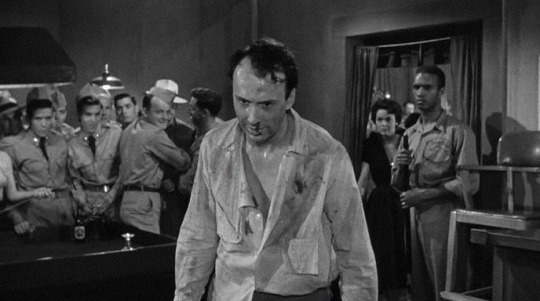
The Phenix City Story (1955)
Southeastern Alabama and southwestern Georgia are separated by the Chattahoochee River. Along the Alabamian banks of this river is Phenix City which, for over a century, became known as, “Sin City, USA”. Organized crime in league with the police department dealt in illicit drugs, fraud, rigged gambling operations, prostitution, and violence. These syndicates flourished on and around Phenix City’s 14th Street, and many of 14th Street’s patrons were Army soldiers visiting from nearby Fort Benning, Georgia (during the Civil War, deserting Confederate soldiers frequented Phenix City). So entrenched was Phenix City’s lawlessness that the city, state, and federal governments declined to do much to combat the organized crime. But in 1954, lawyer and Phenix City resident Albert Patterson ran for Attorney General of Alabama – campaigning partly on a platform to reform his hometown – and won. The Attorney General-elect’s assassination shortly before his swearing-in meant that Sin City, USA’s days were numbered.
With the events in Phenix City still in the news, Hollywood came knocking. Poverty Row studio Allied Artists envisioned an idea for a new movie – fast-tracking The Phenix City Story, directed by Phil Karlson (best known for his ‘50s film noirs) and a screenplay from Daniel Mainwaring (1947’s Out of the Past, 1956’s Invasion of the Body Snatchers) and Crane Wilbur (best known for acting alongside Pearl White in the 1914 serial The Perils of Pauline). Barely a year had passed since Albert Patterson’s assassination by the time of The Phenix City Story’s controversial release: this is a shockingly violent film for ‘50s Hollywood, and the film’s thirteen-minute documentary prologue was censored in the American South. Given Allied Artists’ lack of resources compared to the major Hollywood studios, The Phenix City Story is roughly acted, edited, and shot on occasion. But the film, shot on location and sometimes resembling a documentary, pulsates in its violent immediacy. Over time, it has shed its modest background to become a solid film noir.
Local lawyer Albert “Pat” Patterson (John McIntire) has lived in Phenix City for much of his life, privately despising the immorality plaguing downtown. Rhett Tanner (Edward Andrews) is the owner of Tanner’s Poppy Club – a den of booze and gambling where a bloody fistfight is shrugged off. Despite their disagreements, Pat and Tanner are friends and when the latter asks Pat to be part of a new citizens’ safety committee, he declines. Too many such committees have been created over the decades, sometimes masquerading as fronts for aiding criminal operations. However, Pat remarks, he is looking forward to something special. His son, John (Richard Kiley), is returning home from Germany after several years of prosecuting Nazi war criminals with wife Mary Jo (Lenka Peterson) and their children. When John, Mary Jo, and the children arrive, John is disappointed and Mary Jo is distraught at how Phenix City’s red-light district continues to be a hive of scum and villainy. A rapid turn of events involving the Patterson family’s friends and acquaintances – Ellie Rhodes (Kathryn Grant), Zeke Ward (James Edwards), and Ed Gage (Truman Smith) – will precipitate into a wave of assaults, bombings, and homicides that force Pat to run for Attorney General of Alabama.
Preceding most prints of The Phenix City Story is an introduction by journalist Clete Roberts, famous for his radio news reports, by then working for KNXT-TV (later KCBS) in Los Angeles, and is today best remembered for his role in two memorable episodes of M*A*S*H. Roberts, in the highly formal yet folksy journalistic style of mid-century America, interviews people who were close to the Patterson family or witnessed Phenix City’s violence leading up to Albert Patterson’s assassination. Roberts’ reporting is not as polished as it would eventually become. This makes the on-location prologue difficult to sit through, as Roberts asks too many leading questions and undeveloped questions that can be answered in one or a few words. The interviews do not flow smoothly between subjects. While these thirteen minutes make the rest of the film feel like a cinéma verité (generally, observational cinema) documentary within the mold of moody film noir, it can be grating to sit through. This review is based on a print of the film with the prologue included.
According to Ben Mankiewicz’s outro to the film on Turner Classic Movies (TCM) in January 2020, the prologue was placed into The Phenix City Story to allow the film’s violence – the film is not beyond brutal brawls and hoodlums murdering children – to bypass the Hays Code (which censored what could be shown in American movies until 1968, when it was replaced by the present-day MPA ratings system). If the film’s violence could be framed like a documentary, the censors agreed to allow depictions of bloodied characters, sultry women baring their legs, and a casual use of the epithet “nigger” by police officers on the syndicates’ payroll. The prologue – however flawed it is – allows The Phenix City Story to be as brutal as it is. Some theaters in the American South, noting that there was no requirement to show the longer version of the film (the one containing the prologue) they were provided, refused to show the prints with the prologue, deeming the Roberts interviews as inflammatory and impugning the South’s reputation.
Perhaps Allied Artists executives did not think the American moviegoing audience was ready for a diatribe on race relations, but one can see the United States’ historic racial violence at the film’s extremities, waiting to burst alongside the film’s general depiction of Phenix City’s criminal corruption. The film’s most horrifying moment is when Zeke Ward’s child is murdered by Tanner’s hitmen. Zeke, a black employee at Tanner’s Poppy Club who abandons his job after being barely involved on John Patterson’s side of a vicious clash, is targeted for being sympathetic to the Pattersons. That Tanner chose a black person as his first victim is no coincidence; when the police receive word of his murdered child, the officer on the line hangs up the phone and tells his colleagues: “Somebody just threw a dead nigger kid on Patterson’s lawn. Go out and have a look.” There is no urgent inflection in the officer’s voice, as if that call is considered less important because the victim is not white. As a partial aside, those few seconds make me wonder what the censors thought in that moment, as the Hays Code forbade “vulgarity and suggestiveness”, and recommended “good taste” in the depiction of law enforcement; nevertheless, enforcement over the use of “nigger” and other racial epithets did not have a consistently-enforced standard or discernible pattern of contextual exceptions. The Phenix City Story does not concentrate on race for the purposes of telling its story, but the white gangsters and their enablers imply – through their behavior, and if I may appropriate and slightly alter this contemporary line – that black lives could not matter any less.
The Phenix City Story is filled with unfamiliar faces; only those fluent in classic television (and I am not) might squint in half-recognition of the actors involved. There are no bravura performances here, but John McIntire and Edward Andrews – as the elders of this tale, Albert Patterson and Rhett Tanner – stand out from an otherwise lackluster crowd. George White’s (1946’s The Postman Always Rings Twice, 1947’s Green Dolphins Street) editing is consistent. To his credit, The Phenix City Story, outside of the prologue, is never dull as it blasts away at a rocket’s pace. But during the film’s most violent moments, White’s editing fails to hide some of Allied Artists’ low-budget limitations. In the moment where Zeke’s murdered child is tossed out of a car, White fails to hide the fact that the child is a dummy. On my first viewing, I found myself confused about what the dummy was supposed to be. Was it a plastic alligator, a wooden log? Whatever it was, it looked so terribly phony that I couldn’t contain my laughter. Cut to a close-up of the child’s lifeless face. I realize my laughter arrived at the worst possible time. Good thing I watched this film alone. Nevertheless, a better attempt at editing or an alternative angle could have deemphasized the artifice here and spared me (and probably many others) the mortification of laughing at the worst possible time.
The collaboration between director Phil Karlson and screenwriter Daniel Mainwaring led The Phenix City Story down the path of film noir. Karlson’s experience with film noir and Mainwaring’s expertise in tackling material taking place in small-town America gift this film its lurid, sweltering Southern atmosphere. The Southern hospitality disguising traces of malevolence, the notion that residential Phenix City is supposedly far away – geographically and culturally – from 14th Street, and the familiar banter between acquaintances who know each other’s names and families help The Phenix City Story feel authentic to the audience. It makes the film’s violence personal, even when the Pattersons are nowhere near the camera. Karlson, with journeyman Allied Artists cinematographer Harry Neumann (1940’s Midnight Limited, 1959’s The Wasp Woman), implement the chiaroscuro lighting characteristic in film noir to chilling effect – most notably as John Patterson walks into 14th Street on his first night back to visit the drugstore.
Alabamians who lived through or close to the times of The Phenix City Story say that the film achieves the atmosphere of what life in Alabama was like in the mid-1950s, even though the film contains numerous fabrications to dramatize the narrative. The real John Patterson became Governor of Alabama in 1959 and, ironically in comparison to his depiction here, was a segregationist politician. But Patterson, who later renounced those segregationist views, was considered a liberal figure in Alabama, and he was immediately followed by George Wallace. Following its prologue, The Phenix City Story convulses in rage. It denounces fully the criminal skullduggery that made possible a century of ill repute, though not the white racism that it barely brushes. And despite its technical hiccups and occasional dubious acting, it is a prime example of Southern-set film noir.
My rating: 7.5/10
^ Based on my personal imdb rating. Half-points are always rounded down. My interpretation of that ratings system can be found here.
For more of my reviews tagged “My Movie Odyssey”, click here.
#The Phenix City Story#Phil Karlson#John McIntire#Richard Kiley#Kathryn Grant#Edward Andrews#James Edwards#Lenka Peterson#Biff McGuire#Truman Smith#Clete Roberts#Daniel Mainwaring#Crane Wilbur#Harry Neumann#TCM#My Movie Odyssey
2 notes
·
View notes
Text

Clipping of Susan Tyrrell alongside Biff McGuire(!) onstage at the Lincoln Center during a performance of “The Time of Your Life”.
From The Charlotte Observer 11/12/1969. 📰
0 notes
Photo

#the heart is a lonely hunter#robert ellis miller#1960s#60s#alan arkin#sondra locke#laurinda barrett#stacey keach jr.#chuck mccann#biff mcguire#percy rodriguez#cicely tyson#carson mccullers#the heart is a lonely hunter 1968#the heart is a lonely hunter movie
17 notes
·
View notes
Photo

New Post has been published on https://www.freenews.today/2021/04/04/william-biff-mcguire-tony-nominated-actor-dies-at-94/
William “Biff” McGuire, Tony-Nominated Actor, Dies At 94

William “Biff” McGuire, whose Broadway career spanned over seven decades and included a role in the original 1958 South Pacific, died according to a statement released on April 1. He was 94.
His death was announced by the Seattle Rep, a theater that McGuire shared a long history with. He performed in over 30 productions there, including Saint Joan (1979-80), Noises Off (1986-87), and A Flaw in the Ointment (1993-94). With dozens of films under his belt, he has appeared in scenes with Al Pacino in Serpico, Steve McQueen in The Thomas Crown Affair, and Alan Arkin in The Heart is a Lonely Hunter. Biff was also a regular on television from the late 1940’s to the early 2000’s. In his seventies, he was nominated for two Tony’s for his roles in The Young Man From Atlanta (1997) and Morning’s At Seven (2002).
Related Story
Gloria Henry Dies: ‘Dennis The Menace’ Actress Was 98
In 1960, he was cast opposite British actress Jeannie Carson in a 1960 revival of Finian’s Rainbow. They married in November of that year, and then starred in the original national tour of Camelot. He played King Arthur while Carson played Guinevere. This was just the beginning of their lifelong romance and acting partnership. Together, they moved to the Pacific Northwest to bring playwrights’ works to life, including Shakespeare, Shaw and Ibsen.
Former Seattle Rep Associate Artistic Director Doug Hughes remembers the late actor as “reserved, even shy in real life.” However, Hughes says that Biff gained “a nearly scary confidence once he stepped on a stage.”
McGuire got his famous nickname from playing football as a kid growing up in Camden, Connecticut. He attended the University of Massachusetts, where he studied agricultural engineering and later left to join the US Army in the midst of World War II. Stationed in England, he studied acting, directing, radio, and television, eventually setting his sights on set design, only to return to acting.
In a 2004 talkinbroadway interview, McGuire attributes his love for theater to his big family and his love for entertaining them. “We had all of these big gatherings of the whole family on Saturday nights, and everybody had to do something, so that was my theater. I shared it with a very large family,” Biff reminisced.
McGuire is survived by his wife, two children and two grandchildren.
! function(f, b, e, v, n, t, s) if (f.fbq) return; n = f.fbq = function() n.callMethod ? n.callMethod.apply(n, arguments) : n.queue.push(arguments) ; if (!f._fbq) f._fbq = n; n.push = n; n.loaded = !0; n.version = '2.0'; n.queue = []; t = b.createElement(e); t.async = !0; t.src = v; s = b.getElementsByTagName(e)[0]; s.parentNode.insertBefore(t, s) (window, document, 'script', 'https://connect.facebook.net/en_US/fbevents.js'); fbq('init', '422369225140645'); fbq('track', 'PageView'); Source
2 notes
·
View notes
Text
Serpico (1973) Review
Based on the true story of Frank Serpico who was a cop in the 1960s and early 1970s in New York City, something he had always dreamed of doing to make a difference. He is considered dangerous by other cops when he refuses to take money and be part of the big corruption.
⭐️⭐️⭐️⭐️
(more…)
View On WordPress
#1973#Al Pacino#Alan North#Albert Henderson#Allan Rich#Barbara Eda-Young#Bernard Barrow#Biff McGuire#Biography#Cornelia Sharpe#Crime#Damien Leake#Drama#Ed Crowley#Edward Grover#Gene Gross#Hank Garrett#Jack Kehoe#James Tolkan#John Medici#John Randolph#John Stewart#Joseph Bova#Nathan George#Norman Ornellas#Peter Mass#Review#Serpico#Sidney Lumet#Sky Cinema
0 notes
Link
This un? ^^^ I think the fact that Lumet chose to make non-fiction films, if you get me, was his major force as a filmmaker, and yet to use fictional elements, and cast actors like Pacino and William Holden and Paul Newman in order to enable these social ideas. Would ‘political’ be a better word? His movies are obviously literary. Political – or discursive. Because they are also melodramatic, over the top, gushing, more suited to stage in some places. Especially, in my opinion, within the film Network (1976). Wherein the monologues just get gladiatorial and orchestral. (Not that I dislike this film at all. I give it 5/5. It’s an ace film.)
^ What I mean is that, in Network, the tonality and mood of the film seems supernatural and unlikely, absurd. … But but but … I remember when the Boris Johnson / Sunak / Downing St. revelations came out earlier in the year, and there was a video of his colleagues making jokes about the parties. And they were thick enough to film themselves doing it. And I spoke to one of my friends about it, and said to him, “It reminds me of the Sidney Lumet film Network – they’re like the characters in that film,” and he agreed with me too. They’re all laughing at this horrible shit in this real-life footage and it reminded me of this fictional movie.
Anyway.
Serpico (1973) I would also give full ratings. I didn’t know the flick was based on a real chap until after I watched it. The movie has a simmering tension the whole way through. This is provoked by the thuggish nature of the police department and all of its manpower.
This scene comes in the final quarter of the movie, when Serpico has been bullied relentlessly by the force for the previous three. And one just cheers at the effort: https://www.youtube.com/watch?v=fluKR9XbEjQ
0 notes